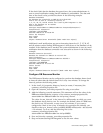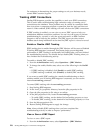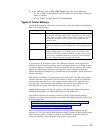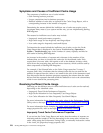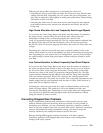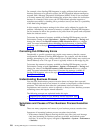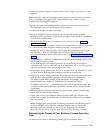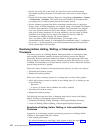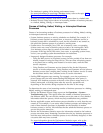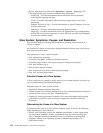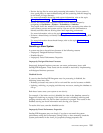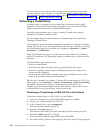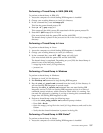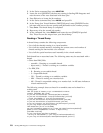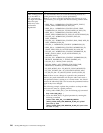v The database is getting full or having performance issues.
For more information on resolving a database issues, refer to the topic “Full
Database Issues and Resolution” on page 218.
v Business processes complete with errors, which places them in a halted state.
v Business Process Usage report shows an increasing number of business processes
in a halted, halting, waiting, or interrupted state.
Causes of Halting, Halted, Waiting, or Interrupted Business
Processes
Causes of an increasing number of business processes in a halting, halted, waiting,
or interrupted state may include:
v System, business process, or activity schedules are disabled. For example, if a
business process requires an output from, or access to, a different service or
business process that is scheduled to work, but the schedule is not turned on,
this places the business process in a halted or waiting state.
v System errors. For example, Java, JVM, out of memory errors, or operating
system errors may cause a business process to halt or be interrupted. Check
your business process logs for causes of the halted or interrupted business
processes. If the logs show JVM errors, Java errors, or operating system errors,
review your operating system documentation for resolutions.
v Improperly designed business processes. For example,
– Using the Wait service in a business process for time periods of less than one
minute, instead of using the Sleep service. This can cause a business process
to be placed into a waiting state instead of an active state, until the Wait
service completes.
– Using Produce and Consume services instead of the Invoke Subprocess
service to invoke subprocesses. Using Produce and Consume services places a
business process into a waiting state, waiting for the Produce service to create
the document and for the Consume service to use the document.
v Sterling B2B Integrator stops running. For example, your site experiences a
power outage and you must restart Sterling B2B Integrator after power is
restored. Your business processes at the time of the power outage may be in
halted, interrupted, or waiting states after the recovery operations run,
depending on the activities being completed at the time of the outage.
To determine the cause of an increasing number of business processes in a halting,
halted, waiting, or interrupted state:
v Review the Business Process Usage report on the Operations > System >
Troubleshooting page. This report shows the number of business processes in
the different states. You can click the number next to the state to view detailed
information about the process, which may help troubleshoot any problems.
v Review applicable system and business process schedules to verify that they are
turned on. For example, if you notice many business processes are halting and
each of these business processes is dependent on the schedule of another
business process or service, this indicates that the scheduled business process or
service may not be turned on.
v Review the Performance Statistics report for information related to the business
process execution times. Increasing execution times for key business processes or
activities may indicate that a business process is not efficiently designed, or that
a resource leak may have occurred.
For more information about the Performance Statistics report, refer to the
topic“Turning On and Turning Off Performance Statistics” on page 213.
Performance Management 233



